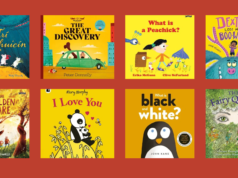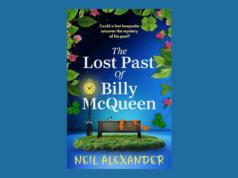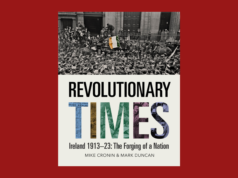
Dirty Linen|Martin Doyle|Merrion Press
Dirty Linen vividly tills the darkness—Doyle’s writing shines
by Rosemary Jenkinson
If there is one thing we have learnt in Northern Ireland, it’s that history can be as explosive as a letter bomb. Martin Doyle, in his prologue to Dirty Linen, tells of how a historian, Dr Thomas Fitzpatrick, contracted cholera and died from the unfumigated papers he handled in the Four Courts in Dublin. “History mishandled can be toxic,” comments Doyle, citing an example where claims of genocide in 1641 were used by Protestants as political capital. “We must decommission any such weaponizing of history.”
The primary strength of Dirty Linen is rooted in Doyle’s personal knowledge of some of those who were murdered
Doyle’s first book, Dirty Linen, is a fascinating blend of memoir, socio-economic history, meticulous biography and interviews with victims of the Troubles. The rain-soaked noir-yet-verdant atmosphere shares a sensibility with Carlo Gébler’s The Glass Curtain, evoking nostalgia in the reader. Whilst Gébler shone a spotlight on the Enniskillen borderlands, Doyle focuses on the Linen Triangle or Murder Triangle, a region of Ulster that includes his own birthplace of Banbridge. The primary strength of Dirty Linen is rooted in Doyle’s personal knowledge of some of those who were murdered.
The Linen mills once dominated the landscape of Co. Down and Armagh as a symbol of Protestantism. I grew up with the story of my mother falling into a Dromore flax pit while playing. Luckily for me, a workman saved her from drowning. One of Doyle’s family stories is of his Catholic grandparents losing their mill jobs for refusing to sign an oath of loyalty to King and country during the civil unrest of 1920. He adroitly compares the derelict mills to the abandoned homes of murder victims, seeing them “as a metaphor for the descent into communal violence.”

Lucent images, blighted lives
Dirty Linen is particularly relevant to 2023, due to the controversial government bill that plans to defund legacy investigations. Doyle suggests that the British government is on a par with Putin’s Russia in its refusal to let a citizen take a case against the state over the killing of a loved one. As for the past, he foregrounds the RUC’s failure to gather evidence on these crimes. The past cannot be laid to rest when there is no sense of resolution: “To those who might ask why you would want to reopen old wounds, the answer might be that some wounds have never been allowed to heal.”
In the hierarchy of murder, it transpires that being killed at home is the worst
Doyle is not a Troubles victim himself, but he talks of the “low-level anxiety” he underwent during the seventies and eighties. He has insight into the nature of loss through his wife’s premature death from cancer, making him the ideal person to write about Troubles survivors in an “attempt to celebrate their lives and record their tragic deaths.”
Lucent images animate the list of blighted lives: Eamon Cairns therapeutically weeding with his bare hands; Gerard Cairns’s blood inking his sister’s birthday card; the human head resting on top of a greenhouse after the customs post bombing. While linen is Doyle’s predominant motif, tactile comfort is derived from other sources. Donna Barry’s memories of her father Pat Campbell reside in the soft warmth of the fur he brought for her from the shoe factory where he worked.
silence has always been the traditional means of coping
In the hierarchy of murder, it transpires that being killed at home is the worst. Doyle explains that it is “desecration of what should be a safe space” and reveals how the survivors coped. Every family escaped reality in various guises. Many emigrated south and, touchingly, even the dead emigrated when the two O’Dowd brothers were exhumed and reburied next to their mother in Co. Meath. Others sought escape through self-protective rituals like barricading windows and doors.
The siege mentality was literal. Some fled trauma by joining paramilitary groups to exact revenge; some chose the ultimate exit of suicide; some found comfort through counselling, but silence has always been the traditional means of coping. The book demonstrates how difficult it was for quiet country folk to be thrust into public consciousness.
Robin Jackson, linked to more than fifty murders, was believed to be an ‘untouchable’ British Army or RUC Special Branch agent. Doyle interestingly compares his serial killing spree to that of Peter Sutcliffe, the Yorkshire Ripper who got away with it due to the low standing of the sex workers he killed, just as Northern Irish Catholics were perceived to have their own low standing.

Tilling the darkness
The stories are suffused with dark details but Doyle’s writing shines through the bleakness like fields of bleached linen. He employs witty turns of phrase in conveying how life in the Troubles was “a game of chance – republican roulette or loyalist lottery…Cause of death: the Cause.” He sees irony in how religion was depicted as ‘the accelerant’, while faith actually acted as ‘a brake’ on communities intent on revenge. There are other astute observations on, for instance, the trend for books about the burning of Ireland’s big houses: “Perhaps more attention should be paid to the burning of small houses.” He cleverly defines the era with “Belfast was not buzzing back then. It was ticking.”
Doyle’s writing shines through the bleakness like fields of bleached linen
Doyle is frank about the sectarianism to which he was subjected as one of the few Catholics at Banbridge Academy. Yet he understands the importance of evenhandedness and mentions the social media post he wrote after publishing his article on the O’Dowd murders “to make it clear I was not ignoring or indifferent to the atrocity that preceded it.” Honesty pervades this book. There is poignant candour from the families. Rosie McConville’s injuries from an attack on a Banbridge bingo bus were so vast, her family believed she “would have been as well dying that night.”
When Doyle journeys back to the “ever-present past” with Noel O’Dowd, “a stone gatepost lies in the grass, a stricken sentinel, like a milestone in the fall of civilisation.” Dirty Linen vividly tills the darkness, bringing the killing fields to life and the forgotten to the fore. Martin Doyle’s hugely commendable achievement is to salute the people of the linenlands who experienced the Troubles in all its terrifying technicolour: “Some of them were angry, some stoic, all of them heroic. They are my tribe.”

Rosemary Jenkinson‘s sixth collection of short stories, Love in the Time of Chaos (Arlen House) is shortlisted for the Edge Hill Short Story Prize 2023.











